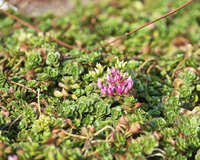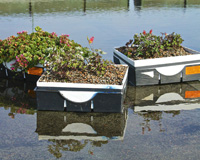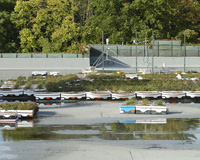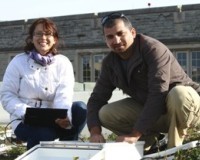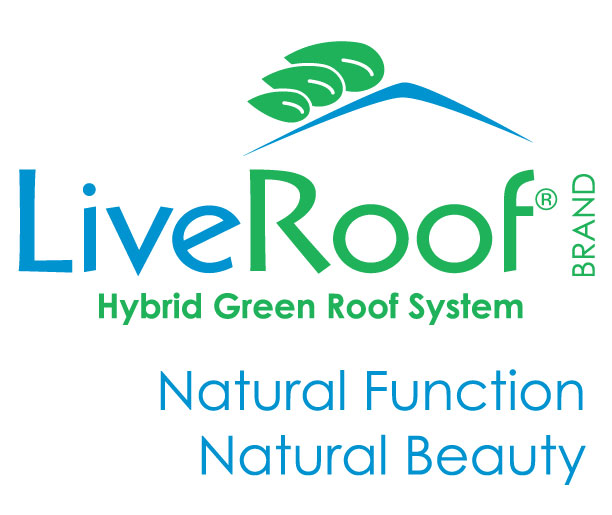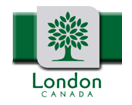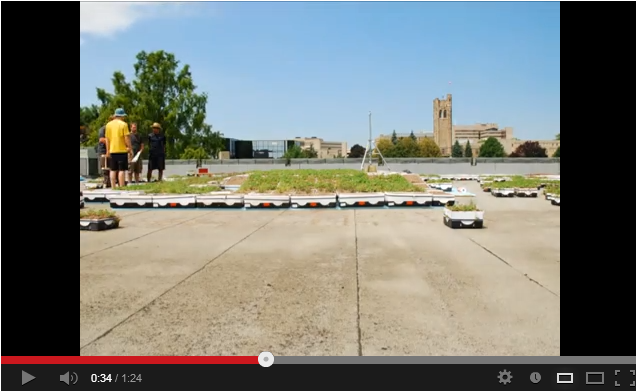1. Green Roofs
What are Green Roofs?
Green roofs are roofs of buildings which have been partially or completely covered with vegetation. Green roofs generally have the following components;
- Waterproof layer
- Drainage Layer
- Growing Medium (soil)
- Vegetation
There are two types of green roofs; intensive and extensive. Intensive green roofs are aptly named because they are labour-intensive to maintain, often requirig irrigation and regular landscaping. Extensive roofs on the other hand are designed to be self-sustaining, requiring little or no maintenance. In addition, intensive roofs are often designed as park-like spaces and are accessible to the residents of the building while extensive roofs are not necessarily designed for public use.
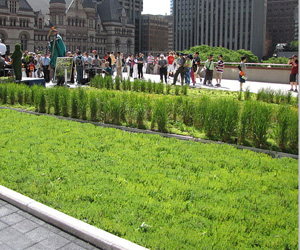
An intensive green roof on Toronto's City Hall (left), an extensive green roof at Western University (right)
What are the Benefits of Green Roofs?
Green roofs have a number of environmental and financial benefits including; mitigation of the urban heat island effect, attenuation of stormwater run-off, improved energy budget for the building, prolonged roof life, improved building aesthetics and potential recreational spaces.
Urban Heat Island
An urban heat island is when an urban area is significantly warmer than its surrounding rural areas because of human activities. Urban heat islands result primarily because of the modification of land surfaces and the use of materials which retain heat. Urban heat islands have a number of adverse environmental and health effects inlcuding increased urban air pollution and decreased water quality of surrounding ecosystems.
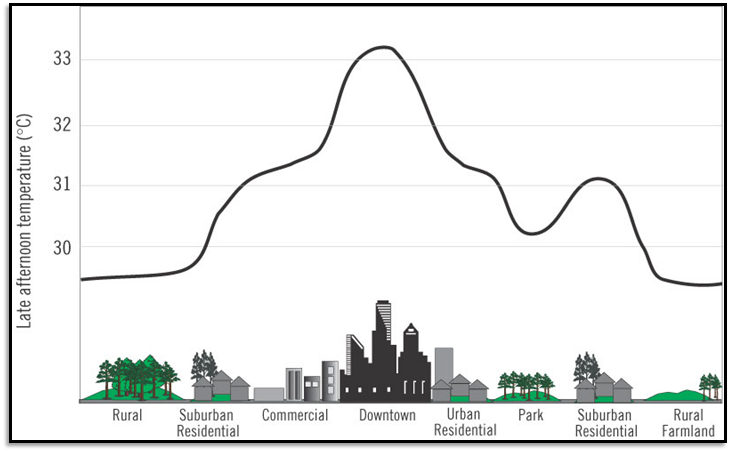
Urban heat islands have the highest temperatres over densly populated downtown areas, but may also be seen in residential areas. Source: EPA 2008
The effects of urban heat islands can be reduced through the use of technologies like green roofs. Green roofs absorb less heat and reflect more light than conventional roofs, lowering the temperature of the roof and the surrounding areas, especially at night.
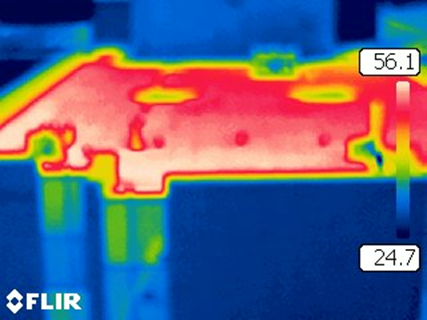
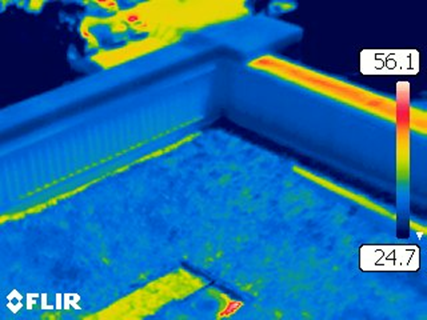
Thermal image of a conventional roof (left) and green roof (right). Blue areas indicate lower temperature.
Stormwater Runoff
During storm events conventional roofs drain stormwater immediately while green roofs absorb some water in their soil medium. Some rainwater will drain from green roofs while the rest slowly evaporatranspires after storm events. Stormwater attenuation helps reduce the stress on urban stormwater and sewer systems which can become overwhelmed during big storms resulting in flash flooding. Stormwater runoff also carries many pollutants from cities into urban and rural water bodies. Green roofs help to filter the pollutants out of stormwater and moderate the temperature of stormwater runoff as well.
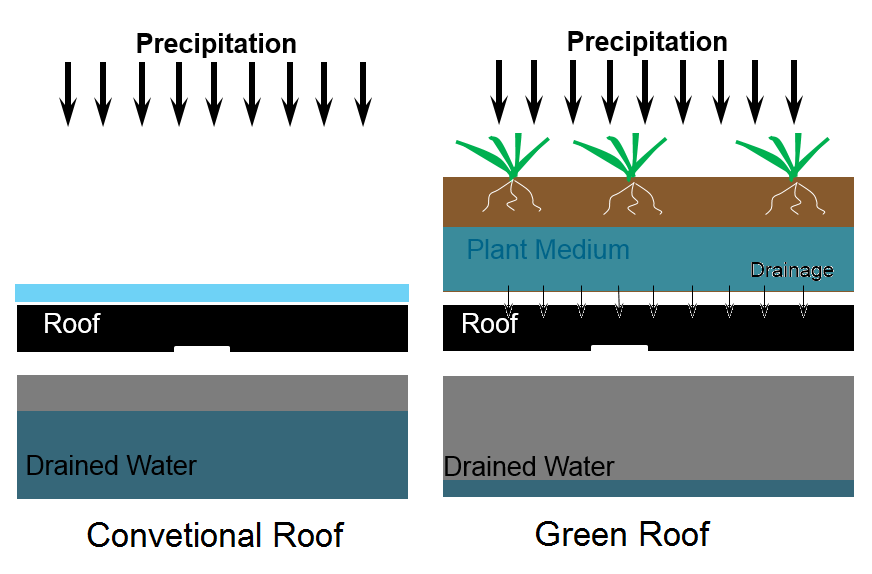
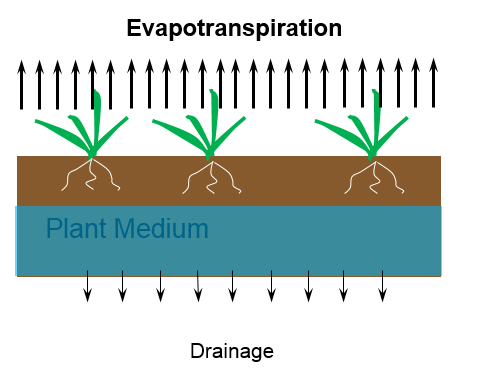
Green roofs capture stormwater during preciptation (left) while conventional roofs drain immediately. Later, stormwater slowly evaporatransipires from green roofs (right).
____________________________________________________________________________________________

